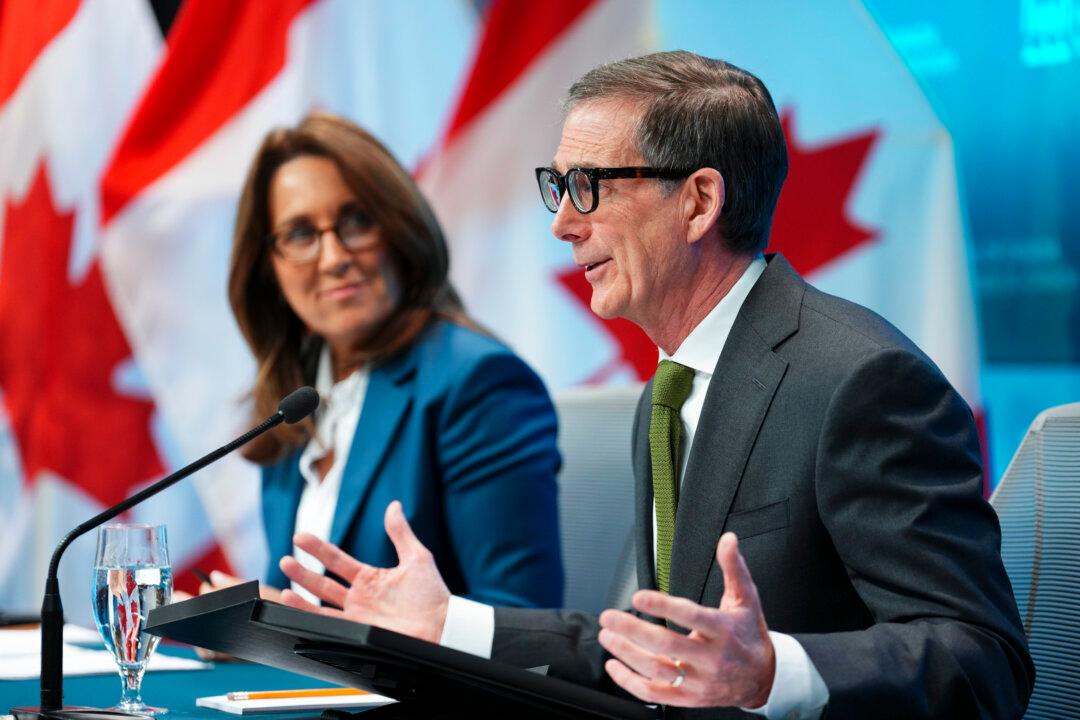The Bank of Canada’s pause on raising interest rates is in jeopardy due to the likelihood of the U.S. Federal Reserve to keep raising its federal funds rate, economists say.
CIBC deputy chief economist Benjamin Tal told The Epoch Times that the BoC can’t “divorce itself” from the Fed for too long. This is regarding how much higher the U.S. central bank can raise its policy rate compared to the Canadian central bank’s overnight rate target.
“The Bank of Canada will tolerate 50, 75, even 100 [basis points], but not more than that,” he said, speaking of how much more the Fed’s key rate can exceed the BoC’s. A basis point is equal to 0.01 percent.
Currently, the differential between the two policy rates is negligible, with the BoC’s overnight rate target at 4.5 percent and the fed funds target range between 4.5 percent and 4.75 percent.
But while the Bank of Canada takes a pause from rate hikes to see how the Canadian economy responds, markets are forecasting the Fed to raise rates into the 5.5 percent to 5.75 percent range and possibly even higher by the summer.
“If the Fed goes and separates itself from the Bank of Canada by more than 100 basis points, the Bank of Canada will react,” Tal said, due to the impact on monetary conditions, especially the weakening Canadian dollar.
The Fed raised its key policy rate by 25 basis points on Feb. 1. The Canadian dollar had gained 1.5 percent in January before falling 1.9 percent in February.
Stocks and bonds have also taken it on the chin in February after a positive January.
Rising U.S. Inflation
What spurred renewed concerns of a more hawkish Fed in financial markets was the Fed’s preferred inflation measure—the personal consumption expenditures (PCE) price index. Its core reading, which excludes food and energy, jumped 0.6 percent month-over-month from December to January and 4.7 percent year-over-year.
BMO chief economist Doug Porter noted that the U.S. 10-year treasury note yield pushed above 3.95 percent for the first time in 2023, and that the 2-year yield rose above 4.8 percent for the first time since the global financial crisis 15 years ago. And the Canadian dollar weakened below US$0.735.
“The bank [BoC] may not have the luxury of staying on the sidelines if the Fed is still busily marching rates down the field, driving the loonie lower (and thereby sending imported costs flaring higher),” Porter said, adding that import prices were up 13 percent year-over-year in the fourth quarter.
In response to the release of the PCE data, TD said on Feb. 24 that “the details of the report should be concerning for Fed officials,” and the Bay Street Bank flagged a notable risk for the Fed’s funds rate to hit 5.75 percent by July.
The Fed’s minutes from its Feb. 1 meeting confirmed that policy-makers are more concerned about elevated inflation than the risks of a possible recession.





